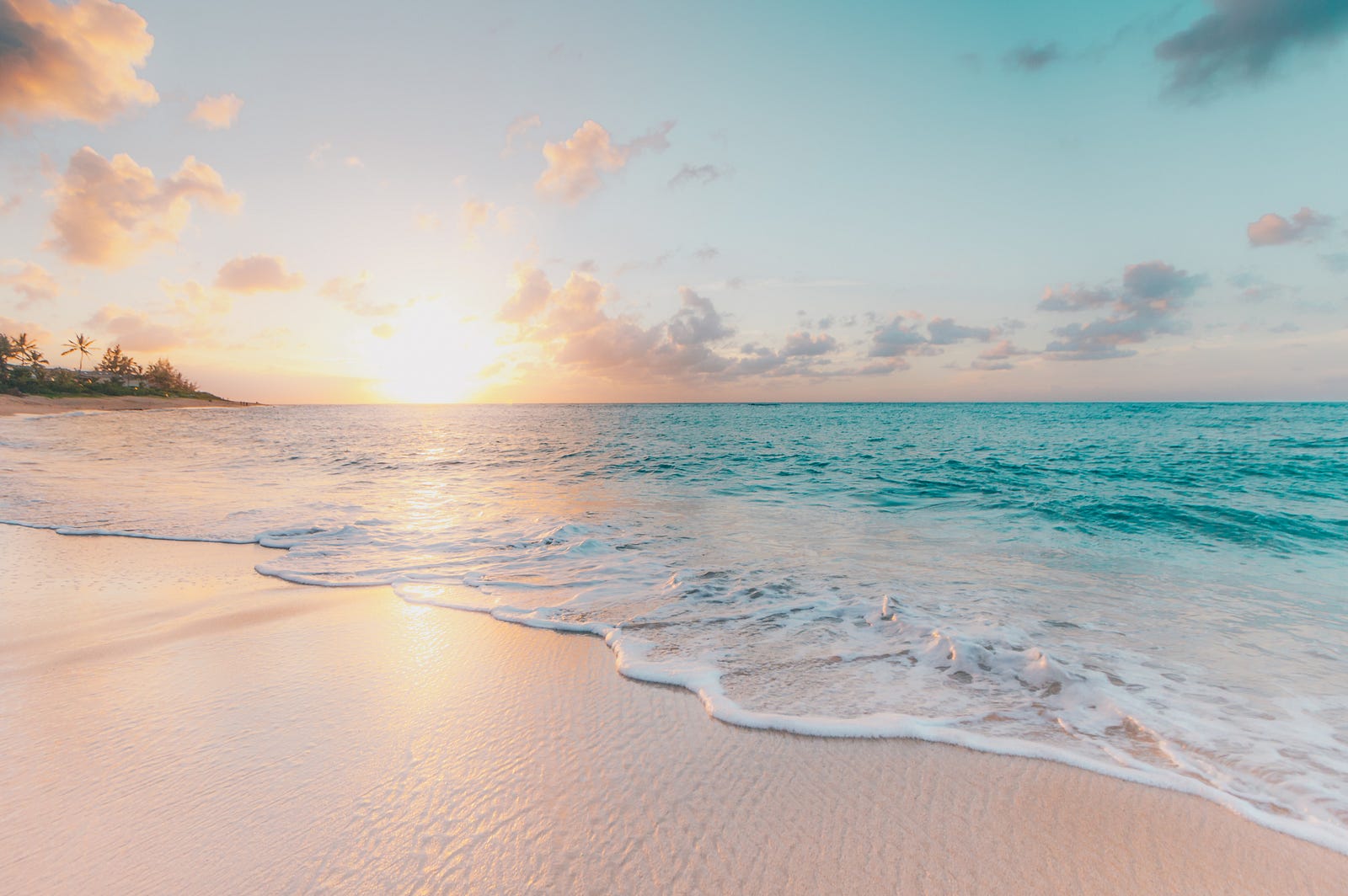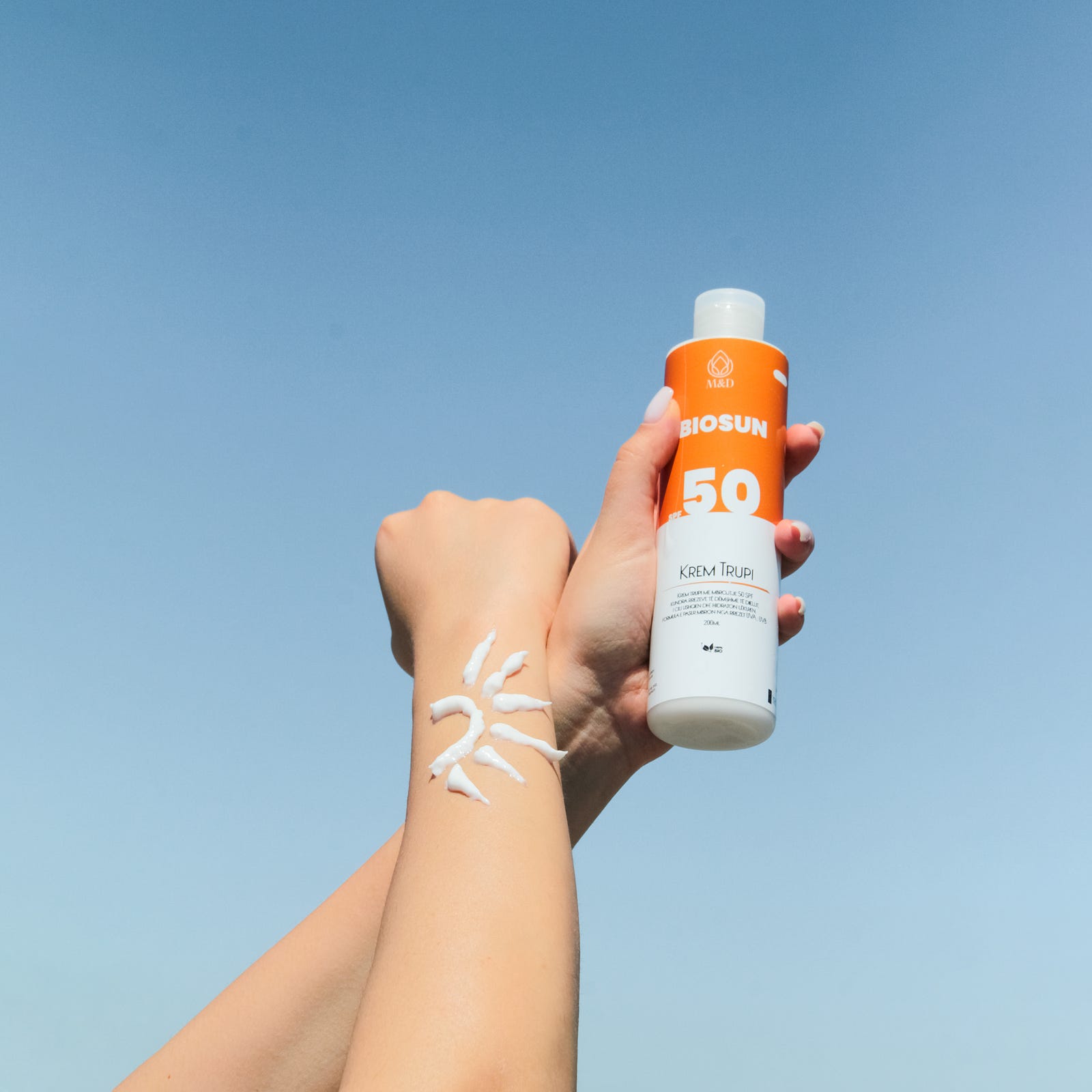DO YOU HAVE TROUBLE SELECTING A SUNSCREEN? Unlike during my youth, we now have a myriad of sunscreen options. Today, we explore sunscreen’s hidden risks. First, though, a quick reminder of how to reduce your risk of getting skin cancers such as basal cell carcinoma, squamous carcinoma, or melanoma.
The American Academy of Dermatology Association offers that the following are important to reducing your skin cancer risk:
- Wearing protective clothing (for example, a lightweight and long-sleeved shirt), pants, sunglasses with UV protection, and a wide-brimmed hat.
- Avoid tanning beds. Sun or tanning UV light from tanning beds or the sun can cause wrinkling and skin cancer. If you want a tan, consider using a self-tanning product (and use sunscreen with it).
- Using extra caution near water, sand, and snow as they reflect the sun’s damaging rays, which can increase your chance of sunburn.
- Seeking shade. The sun’s rays are strongest between 10 in the morning and 2 in the afternoon. If your shadow is shorter than you are, please find some shade.
- Wearing sunscreen on all skin that is not covered by clothing.
The United States Food and Drug Administration (FDA) regulates sunscreen products as over-the-counter drugs.
Do I Need Sunscreen?
Let me be clear about this:
Sunscreen reduces the risk of short- and long-term skin damage from the sun’s rays.
Today is not warm in Seattle, and the sun is hiding now. Is it okay to skin my sunscreen? What about the many cloudier, cooler days or ones I am working indoors?
Knowing that 15 minutes outside can permanently damage my skin, I view my application of sunscreen to sun-exposed body areas as essential. Some of this is to reduce my skin cancer risk; some is pure vanity, trying to slow the aging clock.

Sunscreen can help prevent skin cancer by protecting you against the sun’s harmful UV (ultraviolet) rays. Even though I have darker skin, I know that anyone can get skin cancer, regardless of skin tone, age, or gender. The numbers are daunting:
One in five Americans will get skin cancer by age 70. Sunscreen can lower this risk and help prevent premature skin aging (age spots and wrinkles, for instance).
In the USA, more people are diagnosed with skin cancer annually than all other cancers combined. It is estimated that one in five Americans will develop skin cancer in their lifetime. Having five or more sunburns doubles your melanoma risk.
Cancers caused by sun exposure can be aggressive and fatal if left untreated.
Reasons Sunscreen is Important
Here are a few reasons why wearing sunscreen is important:
- Protection from sunburn. Sunscreen helps prevent sunburn by absorbing or reflecting the UV rays from the sun. Sunburn not only causes short-term discomfort but also increases the long-term risk of skin damage.
- Prevention of premature aging. Sun exposure can cause premature skin aging, including wrinkles, fine lines, and age spots. Sunscreen can help prevent or minimize these signs of aging caused by UV radiation.
- Reduced risk of skin cancer. Unprotected and prolonged exposure to the sun’s UV radiation is a major risk factor for skin cancer. Regularly applying sunscreen with a high sun protection factor (SPF) can help lower the risk of developing skin cancer.
- Protection against other skin damage. Sunscreen protects the skin from other harmful effects of the sun, such as discoloration, uneven pigmentation, and changes in skin texture.
Are There Different Sunscreen Types?
Yes, we may divide sunscreens into two categories based on their active ingredients: Physical (mineral) versus chemical sunscreens:
- Physical (Mineral) Sunscreens. These sunscreens form a physical barrier on the skin that reflects or scatters the sun’s UV rays. Physical sunscreen active ingredients are usually zinc oxide or titanium dioxide. These substances provide broad-spectrum protection against both UVA and UVB rays. Physical sunscreens are generally well-tolerated by most skin types and are often recommended for individuals with sensitive skin. They start working immediately upon application.
- Chemical Sunscreens. Chemical sunscreens work by absorbing the sun’s UV rays and converting them into heat, which is then released from the skin. The active ingredients in chemical sunscreens can vary but often include compounds like avobenzone, octinoxate, oxybenzone, and octocrylene. Chemical sunscreens also provide broad-spectrum protection. They usually need to be applied about 15–30 minutes before sun exposure to allow time for the chemicals to absorb into the skin and become effective.
Sunscreen products may have different formulations, such as lotions, creams, gels, sprays, sticks, or even powders, allowing individuals to choose a format that suits their preference and skin type.
Hidden Risks of Sunscreen: Marine Life
Do you enjoy beach trips and swimming in the summer? You may be health-oriented and lather with sunscreen to protect yourself against the blazing sun.
As we joyfully jump into a lake, river, or ocean, we shed some protective sunscreens into the water. An estimated 14,000 tons of sunscreen enters waterways globally yearly from both sunscreen applications and wastewater runoff.

In the shallow areas where many of us swim, there can be significant amounts of sunscreen in the water. An emerging body of evidence suggests that this water-borne sunscreen can harm ocean life.
Sunscreens have molecules that either repel or absorb the sun’s ultraviolet (UV) rays. Many sunscreens have molecules that protect us from skin cancer-causing UVA and sunburn-causing UVB rays.
The Smithsonian explains that scientists discovered the sun-blocking capabilities of these molecules (and began putting them into sunscreens) in the 1950s. This development represented an advance from historical thick petroleum-based products developed in the prior decade.
Titanium dioxide blocks UVB and zinc oxide UVA. Both occur naturally. Unfortunately, they are a white pigment, with the application to the skin leading to a chalky color.
The next generation of products included ones using avobenzone, a good absorber of UVA. The molecules oxybenzone and octinoxate could be added for UVB protection.
Ongoing debate and research regarding the safety and potential environmental impact of certain chemical sunscreen ingredients continue. There is particular concern about oxybenzone, octinoxate, and coral reef (and other organisms) damage.
Some regions have banned or restricted the use of these ingredients to protect marine ecosystems.
These 7 Destinations Are Banning Certain Sunscreens
It’s no secret that sunscreen is a must-have on any outdoor vacation to prevent both trip-ruining burns and long-term skin cancer rik.www.cntraveler.com
Concerned consumers should cover up during midday. Use oxybenzone- and octinoxate-free sunscreen when needed. Mineral-based sunscreens using titanium dioxide or zinc oxide can be a reasonable alternative, although nothing is truly “reef safe.”
Hidden Risks of Sunscreen: Toxins
Most sunscreen options have over a dozen chemicals the US Food and Drug Administration (FDA) said should be researched by manufacturers before the ingredients can be “generally regarded as safe and effective,” according to a new analysis.
The new report offers the following disturbing observation:
Only one in four sunscreens offers broad-spectrum protection without “troublesome” ingredients.
The Environmental Working Group issued its 2023 report, “EWG 17th Annual Guide to Safer Sunscreens,” earlier this week. The good news? Oxybenzone use is declining.

In 2019, oxybenzone was an ingredient in 60 percent of all sunscreen products tested by EWG, dropping in 2022 to 30 percent. By this year, the chemical was used in only six percent of tested products, including sunscreens, daily moisturizers, and lip balms with sunscreen protection.
What’s the Potential Risk of Sunscreen to Humans?
With concern about the environmental and potential human toxic effects, sunscreen manufacturers are moving away from oxybenzone use.
A US Food and Drug Administration 2019 study showed that oxybenzone was one of six sunscreen chemicals in the volunteers’ bloodstream. Remarkably, their levels were above safety thresholds after only one day of use.
Moreover, the body absorbed oxybenzone at concentrations 50 to 100 times higher than the other ingredients tested. Oxybenzone and another chemical — homosalate — stayed in the blood for seven to 21 days.
Is there a health risk associated with oxybenzone exposure? The following problems have been reported:
- Lower testosterone levels in adolescent boys,
- Hormone changes in men
- Shorter pregnancies and disrupted birth weights in babies.
The Personal Care Products Council — an industry association — counters, saying to CNN that “sunscreens made with these ingredients are not considered unsafe by the FDA and will remain on the market to be used as part of consumers sun-safe practices while additional data are collected.”
In addition, the EWG 2023 report “resorts to fear-mongering with misleading information that could keep consumers from using sunscreens altogether.”
Which Sunscreen Should You Use? EWG Evaluation.
EWG senior scientist David Andrews offers this view: “While manufacturers may be moving away from oxybenzone, a significant portion of the market is still made up of products using the 12 ingredients which can’t be considered safe and effective without further testing.”
That said, I don’t want to leave you with no guidance on sunscreen choice. Sunscreens donning the EWG verification mark must not use marketing claims banned by the FDA, such as “sunblock,” “sweatproof,” or “waterproof,” and cannot be in an aerosol or powder form due to the risk of inhalation.

The product must have a sun protection factor (SPF) between 15 and 50 and agree to provide results on UVA performance from an independent laboratory.
To obtain the EWG mark, the item must be “green,” with little danger to health or the environment. The product must list each ingredient on the label, including nanoparticles and fragrances. It cannot contain ingredients restricted by the European Union and Canada, as well as the FDA, the US Environmental Protection Agency, the US National Toxicology Program, and California’s Proposition 65 list of known carcinogens and reproductive toxins.
Which Sunscreen Should You Use? Specifics.
The following sunscreens have passed EWG verification testing:
• ATTITUDE Mineral Sunscreen Stick, Face, Unscented, SPF 30
• ATTITUDE Mineral Sunscreen Stick, Kids, Face, Unscented, SPF 30
• ATTITUDE Mineral Sunscreen Stick, Kids, Tropical, SPF 30
• ATTITUDE Mineral Sunscreen Stick, Orange Blossom, SPF 30
• ATTITUDE Mineral Sunscreen Stick, Tropical, SPF 30
• ATTITUDE Mineral Sunscreen Stick, Unscented, SPF 30
• ATTITUDE Mineral Sunscreen Stick, Kids, Unscented, SPF 30
• Babo Botanicals Baby Skin Mineral Sunscreen Lotion, SPF 50
• Babo Botanicals Sheer Mineral Sunscreen Lotion, SPF 50
• Babo Botanicals Clear Zinc Sunscreen Lotion, SPF 30
• Beautycounter Countersun Mineral Sunscreen Lotion, SPF 30
• Beautycounter Countersun Mineral Sunscreen Stick, SPF 30
“So far we have three brands with 12 products that have made it through the program, and we’re expecting it to grow,” Emily Spilman, Healthy Living Science program manager for the Environmental Working Group. She adds that “all fees for the program come right back into the science and research that we do at EWG for the benefit of consumers.”
EWG is a non-profit consumer advocacy group that has been investigating sunscreen products for 17 years.
Key points — Hidden Risks: Unveiling the Dark Side of Sunscreen
Question. Is sunscreen use safe for the environment? For humans?
Findings. There are hidden risks to sunscreen use, including to the environment and potentially to humans.
Meaning. If you are concerned, avoid sunscreens containing oxybenzone. I will continue to reduce my short- and long-term skin damage from the sun and my risk of skin cancer using sunscreen with SPF 30 or higher. Of course, I will seek shade as appropriate and wear sun-protective clothing and sunglasses. Hawaii, here I come!
On another topic, if you know someone with breast cancer, here is my comprehensive online course:
Breast Cancer – What a Patient Needs to Know
Breast cancer information can be incredibly valuable for navigating breast cancer management. breastcancerbydrhunter.thinkific.com
The information I provided in this blog is for educational purposes only and does not substitute for professional medical advice. Please consult a medical professional or healthcare provider for medical advice, diagnoses, or treatment. I am not liable for risks or issues associated with using or acting upon the information in this blog.
Thank you for reading “Sunscreen’s Hidden Risks.”




